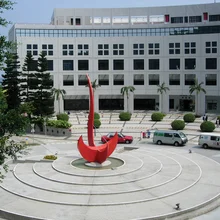
Quant Guide 2017: Hong Kong University of Science and Technology
Hong Kong, China

Master of Science in Financial Mathematics | metrics table at end of article
In 2016, the Hong Kong University of Science and Technology extended its master of science degree in financial mathematics; now it is a year-and-a-half long and students are required to take more courses to complete their degree. The intake size has also increased.
“We used to be a small programme, admitting 50 to 60 students. In 2015, we almost doubled the number of students – it’s now up to 100,” says Leanne Zhong, programme manager.
This programme was launched in 2006 as “master of science in financial mathematics and statistics” and later renamed, but the name change didn’t herald the removal of the statistical component from the programme. The rationale behind the change was to avoid confusion and clarify that its main focus was quantitative finance.
Students who choose this course tend to come from mainland China or Hong Kong, typically from science or engineering backgrounds.
“We do admit students with a business school background, but we require that they have a solid training in maths,” Zhong says.

This degree covers a broad range of courses essential for the training of a future quant. It is focused on four main areas: stochastic calculus, probability and statistical methods in finance; computer programming and statistical programming; derivatives pricing theory, interest rate modelling, credit risk models and risk analysis; and trading strategies, market microstructures and practices.
Programming is a major component of the programme – students work on projects that involve the use of Java, VBA, Python and R.
Theoretical courses tend to be taught by the members of the faculty, while market-related modules with an applied angle are delivered by industry practitioners – previous years have seen instructors affiliated with financial organisations such as Goldman Sachs, JP Morgan, BNP Paribas, HSBC, Fitch and others. Hedge funds and fintech firms also contribute by coming in to help train students for competitions in modelling and algorithmic trading.
The programme keeps up with trends in the financial sector by adding new courses that would give its graduates an edge in the job market. In recent years, new courses on algorithmic trading, market microstructure, financial computing, structuring and trading strategies, and practice in financial markets have become available.
A lot of time is dedicated to practical training. As part of this master’s, it is possible to get involved in up to two independent, three-month projects, in which an industry practitioner delegates a project to a student, providing them with an exposure to the most relevant topics.
According to Zhong, the plan for next year will involve a heavier focus on placement services, making sure the students are well prepared for their future careers.

Click here for links to the other universities and an explanation of how to read the metrics tables
Only users who have a paid subscription or are part of a corporate subscription are able to print or copy content.
To access these options, along with all other subscription benefits, please contact info@risk.net or view our subscription options here: http://subscriptions.risk.net/subscribe
You are currently unable to print this content. Please contact info@risk.net to find out more.
You are currently unable to copy this content. Please contact info@risk.net to find out more.
Copyright Infopro Digital Limited. All rights reserved.
As outlined in our terms and conditions, https://www.infopro-digital.com/terms-and-conditions/subscriptions/ (point 2.4), printing is limited to a single copy.
If you would like to purchase additional rights please email info@risk.net
Copyright Infopro Digital Limited. All rights reserved.
You may share this content using our article tools. As outlined in our terms and conditions, https://www.infopro-digital.com/terms-and-conditions/subscriptions/ (clause 2.4), an Authorised User may only make one copy of the materials for their own personal use. You must also comply with the restrictions in clause 2.5.
If you would like to purchase additional rights please email info@risk.net
More on Quantitative finance
Quant Finance Master’s Guide 2025
Risk.net’s guide to the world’s leading quant master’s programmes, with the top 25 schools ranked
Baruch maintains top spot in 2025 Quant Master’s Guide
Sorbonne reclaims top spot among European schools, even as US salaries decouple
Quant Finance Master’s Guide 2023
Risk.net’s guide to the world’s leading quant master’s programmes, with the top 25 schools ranked
Baruch topples Princeton in Risk.net’s quant master’s rankings
US schools cement top five dominance as graduate salaries soar
Is it worth doing a quant master’s degree?
UBS’s Gordon Lee – veteran quant and grad student supervisor – asks the hard question
Starting salaries jump for top quant grads
Quant Guide 2022: Goldman’s move to pay postgrads more is pushing up incomes, says programme director
Quant Finance Master’s Guide 2022
Risk.net’s guide to the world’s leading quant master’s programmes, with the top 25 schools ranked
Princeton, Baruch and Berkeley top for quant master’s degrees
Eight of 10 leading schools for quantitative finance programmes are based in US, latest rankings show







